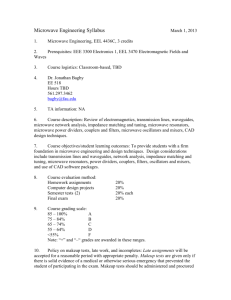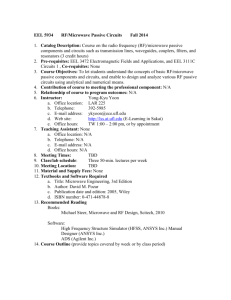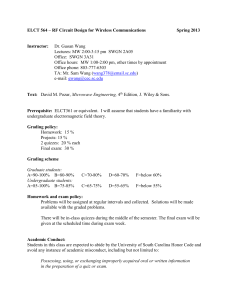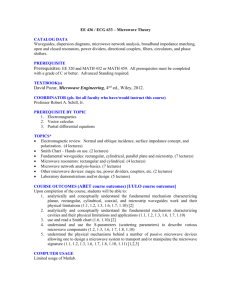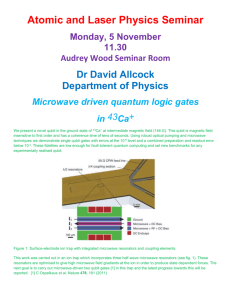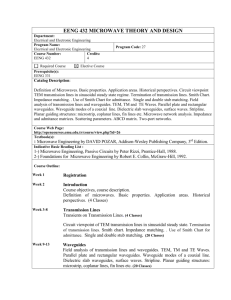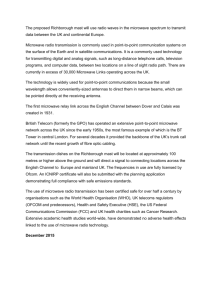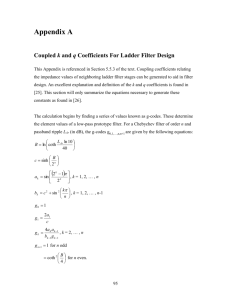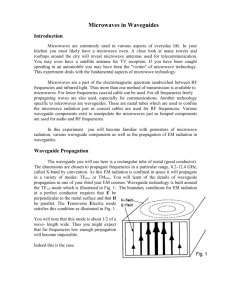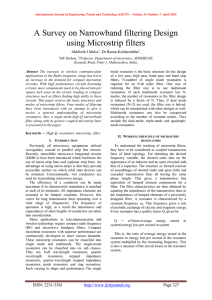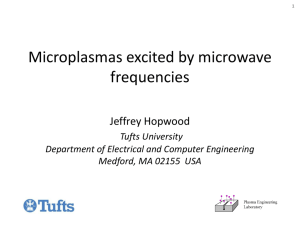ECE 671
advertisement
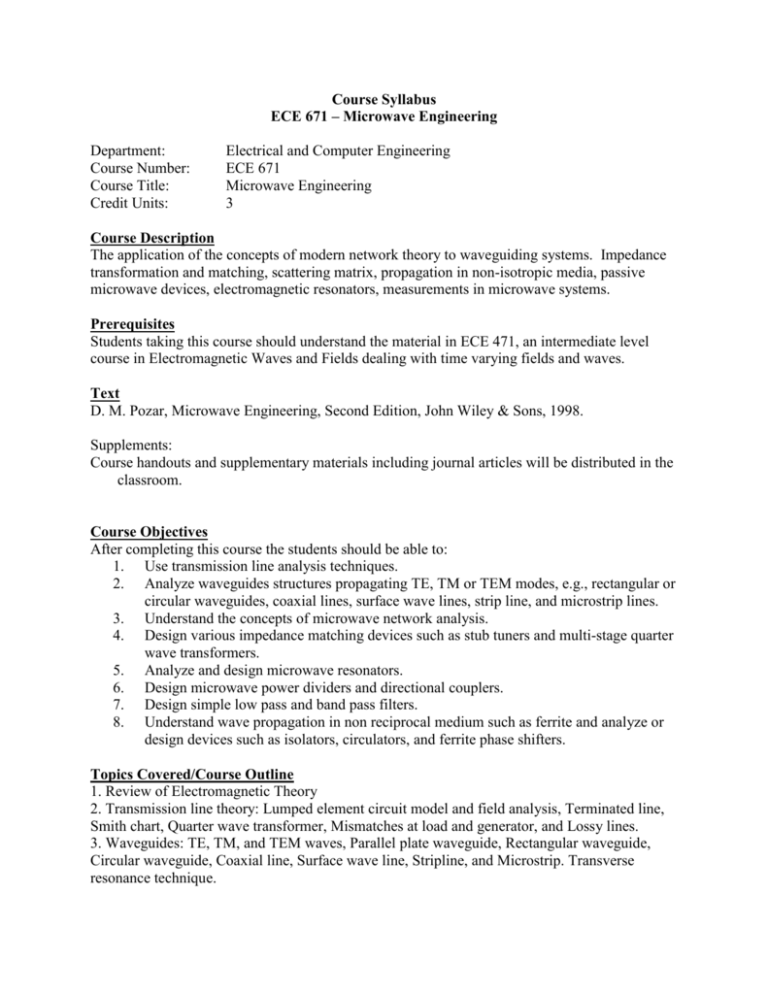
Course Syllabus ECE 671 – Microwave Engineering Department: Course Number: Course Title: Credit Units: Electrical and Computer Engineering ECE 671 Microwave Engineering 3 Course Description The application of the concepts of modern network theory to waveguiding systems. Impedance transformation and matching, scattering matrix, propagation in non-isotropic media, passive microwave devices, electromagnetic resonators, measurements in microwave systems. Prerequisites Students taking this course should understand the material in ECE 471, an intermediate level course in Electromagnetic Waves and Fields dealing with time varying fields and waves. Text D. M. Pozar, Microwave Engineering, Second Edition, John Wiley & Sons, 1998. Supplements: Course handouts and supplementary materials including journal articles will be distributed in the classroom. Course Objectives After completing this course the students should be able to: 1. Use transmission line analysis techniques. 2. Analyze waveguides structures propagating TE, TM or TEM modes, e.g., rectangular or circular waveguides, coaxial lines, surface wave lines, strip line, and microstrip lines. 3. Understand the concepts of microwave network analysis. 4. Design various impedance matching devices such as stub tuners and multi-stage quarter wave transformers. 5. Analyze and design microwave resonators. 6. Design microwave power dividers and directional couplers. 7. Design simple low pass and band pass filters. 8. Understand wave propagation in non reciprocal medium such as ferrite and analyze or design devices such as isolators, circulators, and ferrite phase shifters. Topics Covered/Course Outline 1. Review of Electromagnetic Theory 2. Transmission line theory: Lumped element circuit model and field analysis, Terminated line, Smith chart, Quarter wave transformer, Mismatches at load and generator, and Lossy lines. 3. Waveguides: TE, TM, and TEM waves, Parallel plate waveguide, Rectangular waveguide, Circular waveguide, Coaxial line, Surface wave line, Stripline, and Microstrip. Transverse resonance technique. 4. Microwave Network Analysis: Impedance and admittance matrix, Scattering matrix, Signal flow graph, and Excitation of waveguides 5. Impedance Matching: Single stub and double stub matching, Quarter wave transformer, Theory of small reflections, Binomial, Chebyshev, and Tapered lines. 6. Microwave Resonators: Series and parallel resonant circuits, Transmission line resonators, Rectangular and circular waveguide cavities, Dielectric resonators, Fabry-Perot resonators, Excitation of resonators. 7. Power Dividers and Directional Couplers: T-junctions, Wilkinson power dividers, Waveguide directional couplers, Hybrids, and The Lange coupler. 8. Microwave Filters: Periodic structures, Image parameter and Insertion loss methods, Filter transformation, Filter implementation, Stepped-impedance low pass filters, Coupled line filters, and Filters using coupled resonators. 9. Ferrimagnetic Components: Plane wave propagation in ferrites and ferrite loaded waveguides, Isolators, Phase shifters and Circulators. Relationships to Program Outcomes This course supports the achievement of the following outcomes: a) Ability to apply knowledge of advanced principles to the analysis of electrical and computer engineering problems. b) Ability to apply knowledge of advanced techniques to the design of electrical and computer engineering systems. c) Ability to apply the appropriate industry practices, emerging technologies, state-of-the-art design techniques, software tools, and research methods for solving electrical and computer engineering problems. d) Ability to use the appropriate state-of-the-art engineering references and resources, including IEEE research journals and industry publications, needed to find the best solutions to electrical and computer engineering problems. e) Ability to communicate clearly and use the appropriate medium, including written, oral, and electronic methods. f) Ability to maintain life-long learning and continue to be motivated to learn new subjects. g) Ability to learn new subjects that are required to solve problems in industry without being dependent on a classroom environment. h) Ability to be competitive in the engineering job market or be admitted to an excellent Ph.D. program. Prepared by: Sembiam R. Rengarajan February 14, 2003
